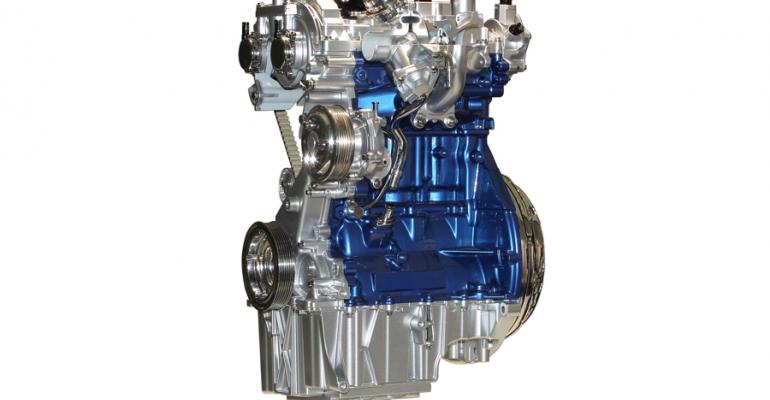DETROIT – Ford and Toyota, fierce competitors in the marketplace, agree customers ultimately will determine what future technologies can best wean the U.S. off imported oil.
Speaking at the SAE World Congress here, top automotive engineers describe the variety of technologies being explored, including hydrogen fuel cells, biofuels and electrification.
But if customers don’t vote with their pocketbooks, such alternative fuels and powertrain options are doomed to failure, says Tom McCarthy, Ford’s chief engineer-engine research and advanced technologies.
“Customers ultimately determine the winners here; you have to keep that in mind,” he says. “We get caught up in a lot of the regulations and technology, but you have to think about the customer.”
He describes a period in New York City in the early 1900s when vehicles were powered by a variety of fuels, including steam, electricity and gasoline.
Ultimately, it was determined electricity was best, and a recharging infrastructure was established. But the range limitations of EVs, combined with availability of cheap gasoline, led customers to choose the internal-combustion engine.
Envisioning a similar scenario on the horizon, McCarthy says Ford, like other auto makers, is working on a number of advanced powertrain technologies so it can quickly respond to market demands.
But while there are many promising fuel and powertrain solutions, the internal-combustion engine is the best solution in the short- to mid-term, he says.
ICEs still can become more efficient, and alternative technologies and fuel sources could prove helpful in optimizing conventional engines, McCarthy says.
Ford’s line of downsized direct-injected turbocharged EcoBoost engines, for example, could be aided by increased use of ethanol.
“With downsizing, the element of knock mitigation becomes more important,” McCarthy says. “Ethanol offers some opportunities, especially relative to knock resistance. As you increase the percentage of ethanol, you can increase the octane rating of the fuel.”
Today’s gasoline contains about 10% ethanol, a percentage expected to increase. Even though ethanol levels are rising, the full benefits of the additive have not been realized, he says.
“In 2000, we were at E0, and in 2010 the standard was E10, but octane remained fairly flat,” the Ford engineer says. “That’s because the blend-stock octane was reduced. If we maintained it, we would have raised the octane, and that could have been an opportunity.”
McCarthy says hybrid-electric vehicles likely will dominate the electric-vehicle market in the future, with plug-in hybrids growing in numbers over the next decade. Full battery-electric vehicles are expected to grow, but in smaller numbers.
Developing each of these technologies independently of one another is not necessarily the best strategy, he says. But similar to using ethanol to aid in downsizing. Ford is studying how different technologies and fuels could work together.
“As we look forward, it’s important there are synergies with electrification, because it enables the efficient use of the hydrocarbon fuel we have onboard,” McCarthy says. “And when we consider future engine concepts and technologies, we ask, ‘How do they work effectively with the different fuels available and the different levels of electrification?’”
Toyota also is exploring a number of future powertrain solutions and alternative fuels, but is placing most emphasis on electrification, says Justin Ward, advanced powertrain program manager.
Electrification is in the auto maker’s DNA, he says, noting in 1925 the company tasked engineers with developing a high-density, fast-charging battery that would rival today’s lithium-ion units.
Agreeing with McCarthy, Ward says gasoline and diesel engines will remain prominent but notes there is a lot of room for improvement in hybrid-electric powertrains.
Pure battery-electric and plug-in hybrid vehicles also are being advanced, aided by Toyota’s extensive background in HEVs, he says.
“When you look at (an) EV, which is simpler than an HEV, many of the controls and components (of HEVs) transfer directly to EVs,” Ward says. “What we’ve learned from hybrids is perfectly applicable.”
Hydrogen fuel cells are promising as well. Toyota operates a 100-vehicle fuel-cell fleet in North America and it has performed flawlessly, he says.
Ward sees EVs playing a role in short distance commuting, while HEVs and PHEVs continue to be big players in the midsize-car market. Fuel-cell vehicles could slot into the small and midsize car sector and even see some heavy-duty applications due to their efficiencies.
But ultimately the consumer will determine which powertrain and fuel source will dominate the market.
“We’re also concerned about cost of technology,” Ward says. “You have to provide all the benefits customers expect, but if they can’t afford it they aren’t going to buy it. You have to know where (the technology) fits in the marketplace.”





